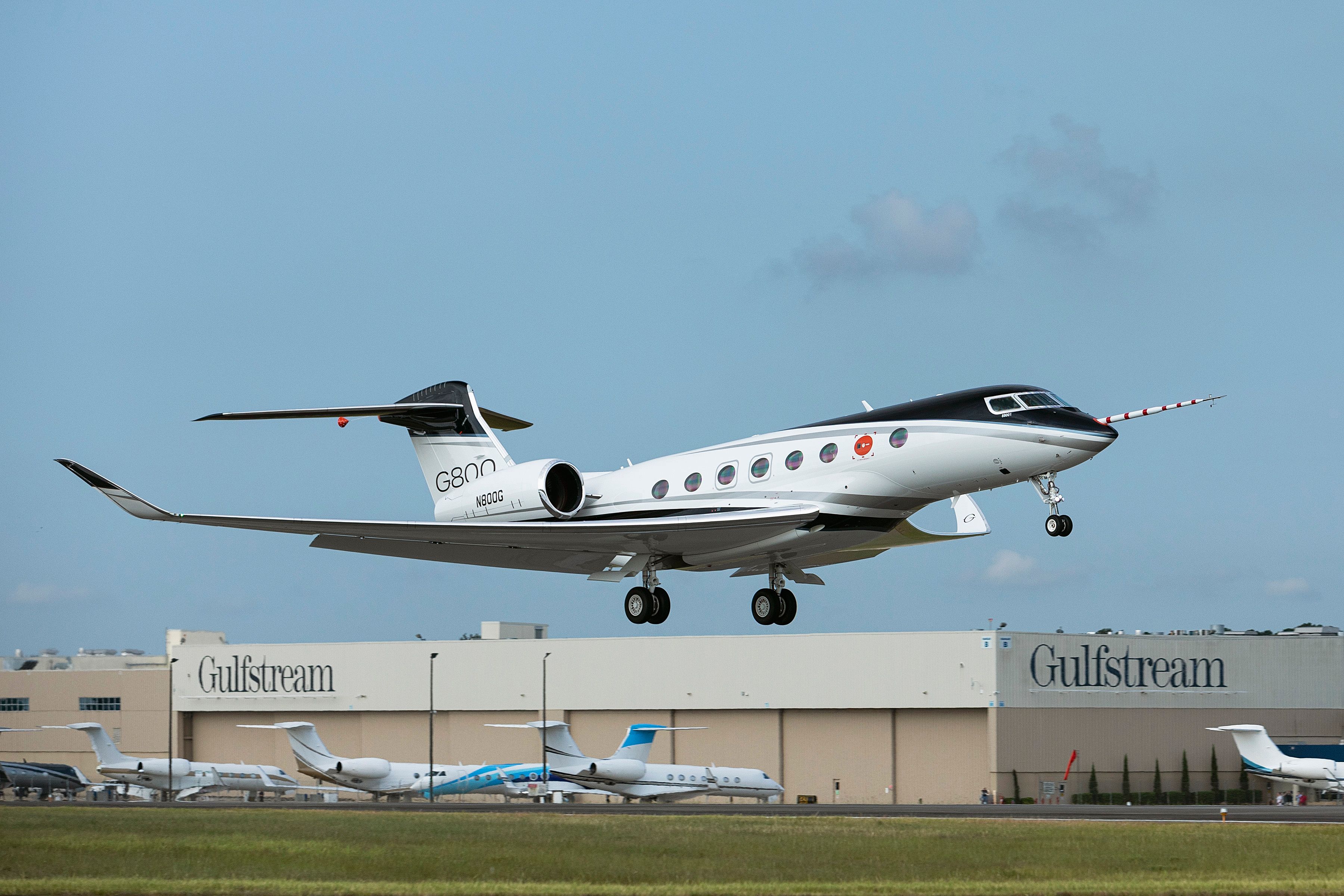Last week, Gulfstream's longest-range aircraft, the G800 completed its maiden flight, just ten months after its elaborate unveiling. The G800's first flight operated for around two hours and officially launched the new aircraft's flight-test program.
The test flight started from Gulfstream's base in Georgia, US, leaving Savannah/Hilton Head International Airport (SAV) around 9:00 am on June 28. The jet flew over the coast for a series of circuits before returning to Savannah airport. Since 2016 Gulfstream has used blended-SAF for its daily operations and flight test programs, as it did on the G800's first flight. It was an early entrant to the SAF initiative and, in 2019 was the first business jet manufacturer to make SAF available to its customers.
Here's what the first G800 take-off looked like
Gulfstream President Mark Burns said that with the G800, Gulfstream had "changed the game once again for our industry. We are seeing great interest in the G800, and this first flight brings us even closer to delivering a Gulfstream for every mission."
In October 2021, Gulfstream announced two new aircraft, the G400 and the G800, although plans for the G800 had been in place since the launch of the G700 two years earlier. The G800 and G700 are close cousins, sharing the new Rolls-Royce Pearl 700 engine, Honeywell Symmetry flight deck avionics, high-speed wing, tail and fuselage cross-section. The G800 has the longest range of any currently announced business jet, linking city pairs such as New York-Shanghai, Hong Kong-Los Angeles or New York-Tahiti.
The G800 is all about range, speed and comfort
Gulfstream says it has a range of 8,000 nautical miles (14,816 km) at a speed of Mach 0.85 (904 km/h) or 7,000 NM (12,964) at Mach 0.90 (956 km/h). The G800 has a maximum cruise altitude of 51,000 feet (15,545 m), although, for those lucky enough to be in one at 41,000 feet, it will feel like 2,916 feet, which Gulfstream say is the lowest cabin altitude in the industry. As expected with an ultra-long-range jet, the G800 has a spacious 6 ft 3 in (1.91 m) cabin height, an 8 ft 2 in width and is 46 ft 10 in long, excluding the baggage compartment.
While it is marketed as a 19-passenger aircraft, the price tag of around $72 million (€69 million) does cover a range of cabin layout options. It will have a 19-seat layout that can sleep 10 with four living areas or up to 15 passengers with three living areas and a crew compartment. Both layouts have forward and aft lavatories and a galley, although the galley is larger in the three living area configuration. The cabin has 100% fresh, never recirculated air and plasma-ionization air purification system, a high-definition circadian lighting system and 16 large oval windows.
The new Rolls-Royce Pearl 700 engine has a rated take-off thrust of 18,250 pounds (81.2 kN) and is 18% more fuel-efficient than the engines on the G800 predecessor, the G650. Pilots will enjoy the dual head-up displays, which feature a new Combined Vision System, which combines computer-generated synthetic vision with infrared images of the outside environment. The G800 flight deck, which is identical to the G700, includes ten touchscreen displays, electronically linked side sticks, a predictive landing performance system and a high-speed data concentration network. The G700 and the G800 will share a common Pilot type rating.
At the launch, Gulfstream forecasted the first deliveries would be by the end of 2023, but certification delays have extended that into 2024. Can you wait that long?
Discover more aviation news here.


